Almost 1000 Previously Undiscovered Prehistoric Barrows Identified In The Netherlands
Conny Waters - AncientPages.com - Over 6,500 volunteers have supported accurately identifying approximately 1000 prehistoric burial mounds in the Netherlands in just four months, proving the value of involving volunteers in archaeology.
Volunteers and professional archaeologists taking core samples at a burial mound. Image credit: Quentin Bourgeois
In 2018, the Heritage Quest project was launched to harness the power of citizen scientists, utilising crowd-sourcing to identify archaeological features on lidar imagery of the central Netherlands.
Through the involvement of thousands of people online, prehistoric burial mounds were identified across the region in a short amount of time. However, the accuracy of crowd-sourced data has been questioned in the past, as the majority of volunteers are not professional archaeologists.
“While the volume of data exceeded our expectations, we faced a key challenge common to large citizen science projects: how reliable are the detections made by volunteers?” states lead author of the research, Dr Quentin Bourgeois from Leiden University.
To assess the accuracy of the data, the authors performed a ground-based survey of 380 sites identified during the study, examining them in person to determine whether they were in fact prehistoric barrows.
Four examples of lidar maps, highlighting locations volunteers identified as burial mounds and the number of times they were independently selected. Credit: Antiquity (2024). https://doi.org/10.15184/aqy.2024.127
According to Dr Bourgeois, the results are clear: “Citizen science works! We found a direct correlation between the number of volunteers identifying a potential archaeological object and its likelihood of being a prehistoric burial mound.”
This means that the Heritage Quest project has discovered 1,000 previously-unknown burial mounds, doubling the number of known mounds from the region in just four months.
Importantly, this shows the value of involving volunteers in archaeological projects, allowing for the identification of archaeological features much more quickly than could be achieved by professionals alone.
“What would have taken professional archaeologists years to accomplish was achieved in a matter of months thanks to the combination of lidar technology and citizen participation”, adds Dr Bourgeois.
It also has implications for heritage policy-making, as local governments can apply citizen science to quickly and cost-effectively identify heritage sites for protection. In the future, the authors plan to combine volunteer participation with machine learning, identifying archaeological sites on an even greater scale.
However, according to Dr Bourgeois, the most exciting part of the research was seeing how the involvement of the volunteers led to greater community engagement with archaeology, producing outspoken supporters for the region’s heritage.
"I’m blown away by how many previously unknown burial mounds the volunteers helped uncover”, concludes Dr Bourgeois. “I knew we were working in an important area with many traces of a prehistoric landscape still preserved, but I never expected to find so much so quickly! But for me the most amazing outcome is seeing the passion the volunteers had for our research! They have now become vocal advocates for the preserved traces of prehistoric landscapes in their region.”
Their results are published in the journal Antiquity.
Written by Conny Waters - AncientPages.com Staff Writer
More From Ancient Pages
-
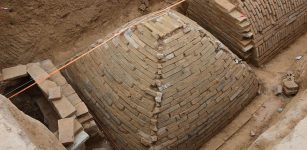 Mysterious Pyramid-Shaped Tomb Discovered In China
Archaeology | Mar 15, 2017
Mysterious Pyramid-Shaped Tomb Discovered In China
Archaeology | Mar 15, 2017 -
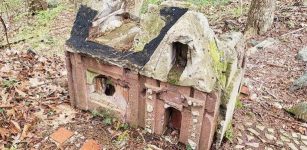 Adorable Village Of The Little People In Connecticut
Featured Stories | Jul 25, 2019
Adorable Village Of The Little People In Connecticut
Featured Stories | Jul 25, 2019 -
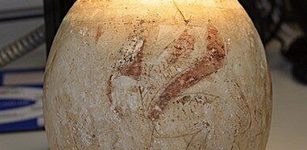 5,000-Year-Old Mystery: Decoration Of Eggs Predates Our Easter Tradition
Archaeology | Apr 9, 2020
5,000-Year-Old Mystery: Decoration Of Eggs Predates Our Easter Tradition
Archaeology | Apr 9, 2020 -
 Bronze Age Vatya Culture: ‘Urnfield’ Cemetery And Remains Of A High-Status Woman
Archaeology | Jul 30, 2021
Bronze Age Vatya Culture: ‘Urnfield’ Cemetery And Remains Of A High-Status Woman
Archaeology | Jul 30, 2021 -
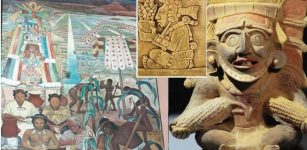 Yum Kaax, Mayan God Of Agriculture, Lord Of Woods And Caretaker Of Animals
Featured Stories | Jul 15, 2020
Yum Kaax, Mayan God Of Agriculture, Lord Of Woods And Caretaker Of Animals
Featured Stories | Jul 15, 2020 -
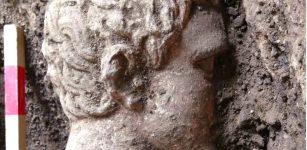 Incredibly Well-Preserved 2,000-Year-Old Statue Of Greek God Hermes Found In Heraclea Sintica, Bulgaria
Archaeology | Jul 12, 2024
Incredibly Well-Preserved 2,000-Year-Old Statue Of Greek God Hermes Found In Heraclea Sintica, Bulgaria
Archaeology | Jul 12, 2024 -
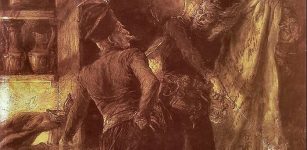 Pan Twardowski – The Man Who Sold His Soul To The Devil In Exchange For Special Powers
Featured Stories | Aug 12, 2021
Pan Twardowski – The Man Who Sold His Soul To The Devil In Exchange For Special Powers
Featured Stories | Aug 12, 2021 -
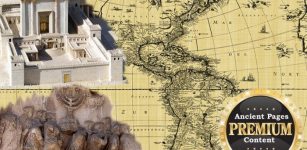 Traces Of Ancient Near East Civilization In America – An Out-Of-Place Ancient Inscription – Part 2
Ancient Mysteries | Nov 13, 2020
Traces Of Ancient Near East Civilization In America – An Out-Of-Place Ancient Inscription – Part 2
Ancient Mysteries | Nov 13, 2020 -
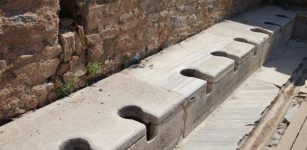 First Pay Toilets Were Invented In Ancient Rome In 74 A.D.
Ancient History Facts | Jan 29, 2017
First Pay Toilets Were Invented In Ancient Rome In 74 A.D.
Ancient History Facts | Jan 29, 2017 -
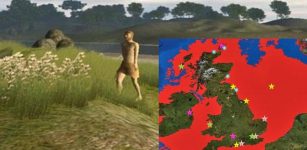 DNA From Doggerland That Separates The UK From Europe – New Study
Archaeology | Jul 20, 2020
DNA From Doggerland That Separates The UK From Europe – New Study
Archaeology | Jul 20, 2020 -
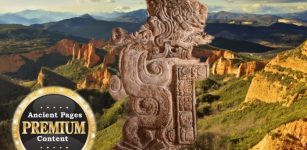 Mysterious Ancient European Civilization – Puzzling North American Connection – Part 1
Ancient Mysteries | Oct 21, 2019
Mysterious Ancient European Civilization – Puzzling North American Connection – Part 1
Ancient Mysteries | Oct 21, 2019 -
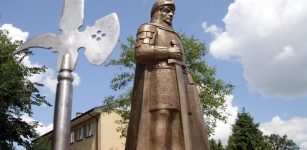 Zawisza Czarny: Most Famous Polish Knight And The Quest For His Family Home
Featured Stories | Apr 26, 2016
Zawisza Czarny: Most Famous Polish Knight And The Quest For His Family Home
Featured Stories | Apr 26, 2016 -
 On This Day In History: Amelia Earhart’s First Solo Ocean Flight – On Jan 11, 1935
News | Jan 11, 2017
On This Day In History: Amelia Earhart’s First Solo Ocean Flight – On Jan 11, 1935
News | Jan 11, 2017 -
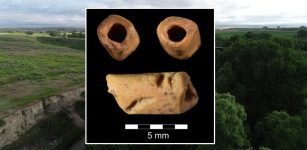 Oldest Bead In America Discovered At La Prele Mammoth Site, Wyoming
Archaeology | Feb 13, 2024
Oldest Bead In America Discovered At La Prele Mammoth Site, Wyoming
Archaeology | Feb 13, 2024 -
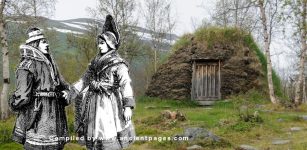 Unexpected Historical Discovery: Remains Of Famous Sami Woman Recovered
Archaeology | Aug 22, 2022
Unexpected Historical Discovery: Remains Of Famous Sami Woman Recovered
Archaeology | Aug 22, 2022 -
 Surprising Time Capsule In Antarctica – Evidence Of Toxic Heavy Metal Pollution 800 Years Ago
Earth Changes | Jan 18, 2024
Surprising Time Capsule In Antarctica – Evidence Of Toxic Heavy Metal Pollution 800 Years Ago
Earth Changes | Jan 18, 2024 -
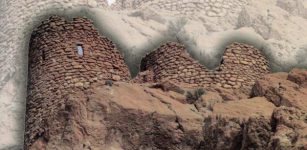 Mythical Temple Of Wingded Warrior God Haldi In The ‘City Of The Raven’
Civilizations | Jul 21, 2016
Mythical Temple Of Wingded Warrior God Haldi In The ‘City Of The Raven’
Civilizations | Jul 21, 2016 -
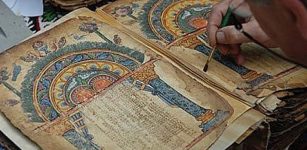 Illuminated Ancient Manuscripts Reflect 1,000 Years Of Human History
Artifacts | Sep 12, 2015
Illuminated Ancient Manuscripts Reflect 1,000 Years Of Human History
Artifacts | Sep 12, 2015 -
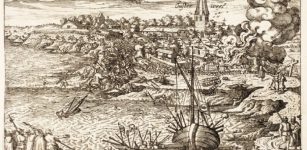 On This Day In History: Battle of Oosterweel Was Fought – On Mar 13, 1567
News | Mar 13, 2017
On This Day In History: Battle of Oosterweel Was Fought – On Mar 13, 1567
News | Mar 13, 2017 -
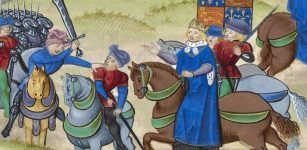 On This Day In History: Peasants’ Revolt First Great Popular Uprising In English History – On June 12, 1381
News | Jun 12, 2016
On This Day In History: Peasants’ Revolt First Great Popular Uprising In English History – On June 12, 1381
News | Jun 12, 2016


